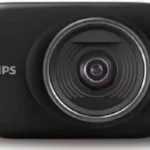

PHILIPS Remote Control
Overview
This air mouse remote control is suitable for smart projectors. It includes air mouse function and infrared emission function when Bluetooth is not connected. The remote control has 16 buttons.
Characteristics
- Temperature characteristics Storage temperature:-10℃~+60℃ Operating temperature:-10℃~+55℃
- Electrical characteristics
- Operating voltage: 2.2~3.3
- Sleep standby current: ≦ 6uA
- Operating current
- Bluetooth general button mode: ≦2mA;
- Bluetooth voice mode: ≦10mA
- Bluetooth pairing status: ≦1mA
- Infrared mode: ≦15mA
- Bluetooth air-mouse mode: ≦10mA
- Operating distance: 10m;
- RF frequency: ISM Band 2.4GHz ~ 2.4835 GHz;
- Carrier Protocol: IR 38KHz(NEC) / RF 2.4GHz (FSK
Remote control appearance
Remote control button definition (NEC encoding format, customer code:
20DFH, 38K carrier frequency)when the remote control is connected via Bluetooth, all keys on the remote control emit infrared signal; after the remote control is connected normally, all keys are sent to the device via the receiving module via Bluetooth
| No. | Button Name | Hid Value | IR Code | Remarks |
| 1 | Power ON/OFF | 0C0030 | 41 | |
| 2 | Settings | 0C0070 | 1C | |
| 3 | Input Source | 0C006A | 50 | |
| 4 | Up | 0C0042 | 42 | |
| 5 | Down | 0C0043 | 43 | |
| 6 | Left | 0C0044 | 1A | |
| 7 | Right | 0C0045 | 4F | |
| 8 | OK | 0C0084 | 1B | |
| 9 | Back | 0C0224 | 4D | |
| 10 | Home | 0C0223 | 14 | |
| 11 | Menu | 0C0040 | 0D | |
| 12 | Play/Pause | 0C00CD | 12 | |
| 13 | Task_Switch | 0C0071 | 13 | |
| 14 | VOL+ | 0C00E9 | 51 | |
| 15 | VOL- | 0C00EA | 56 | |
| 16 | Mouse | 无 | 5A |
Remote control Device Pairing
The remote control and the Bluetooth receiver device can be operated normally after Pairing.Pairing Method:Press the “left” button and the “right” button of the remote control at the same time. After pressing the two buttons simultaneously for 2 seconds, the remote control enters the pairing mode. The indicator light of the remote control flashes quickly during pairing. When the light is always on for about 4 seconds, it indicates the pairing success. If paring not successful, the blue light will continue to flash for 30 seconds and enter the standby mode. Before entering the pairing state, you need to send an infrared code, the infrared IR key value is 0x33.
Bluetooth air mouse function
Press the air mouse button on the remote control, the remote control enters the air mouse mode, the projector will appear a cursor, and the cursor can be moved by operating the remote control. Pressing the OK button at this time is equivalent to pressing the left button of the mouse, and the return button is equivalent to the right mouse button. Press the air mouse button again to exit the air mouse mode and the projector cursor disappears.
Remote-controlled indicator
The status indication is as follows:
- During pairing, the blue light flashes quickly (defined as 0.25 second on, 0.25 second off);
- If the button is pressed in infrared mode, the red light will flash once, if the button in Bluetooth mode is pressed down, the blue light will flash once, long press is to keep the light on
Bluetooth description related definitions
- Pid:0x9877
- Vid: 0x568A
- Bluetooth device name: Philips AirMote
FCC Warning
This device complies with part 15 of the FCC rules. Operation is subject to the following two conditions: this device may not cause harmful interference, and this device must accept any interference received, including interference that may cause undesired operation.
Changes or modifications not expressly approved by the party responsible for compliance could void the user’s authority to operate the equipment.
NOTE:
This equipment has been tested and found to comply with the limits for a Class B digital device, pursuant to part 15 of the FCC Rules. These limits are designed to provide reasonable protection against harmful interference in a residential installation. This equipment generates uses and can radiate radio frequency energy and, if not installed and used in accordance with the instructions, may cause harmful interference to radio communications. However, there is no guarantee that interference will not occur in a particular installation. If this equipment does cause harmful interference to radio or television reception, which can be determined by turning the equipment off and on, the user is encouraged to try to correct the interference by one or more of the following measures:
- Reorient or relocate the receiving antenna.
- Increase the separation between the equipment and receiver.
- Connect the equipment into an outlet on a circuit different from that to which the receiver is connected.
- Consult the dealer or an experienced radio/TV technician for help.
Radiation Exposure Statement
The device has been evaluated to meet general RF exposure requirements. The device can be used in portable exposure conditions without restriction.

